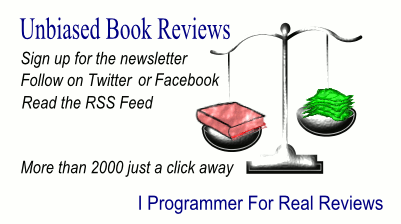| Rails AntiPatterns |
|
Author: Chad Pytel and Tammer Saleh Ruby, and its best known framework Rails, seems to attract the sort of book that other languages and frameworks would be pleased to have. This one focuses on some very high level concerns. It is all about anti-patterns and how to both fix and avoid such problems. The first thing to say is that you need to be a good Rails programmer to get anything much from the book. Although many of the anti-patterns are just standard problems that arise in other environments, the discussion is very Rails-centric. There is no way that this book attempt to teach you anything much about either Ruby or Rails, so it is unsuitable for the beginner. Not only is it unsuitable for the beginner, it is unsuitable if you are looking for a practical how-to or cookbook style. This is about deep thinking and principles.
It starts off with a look at what sorts of things go wrong with the Model - and to understand much of the discussion you need to know you MVC. At least you need to know what the objective of MVC is and how it is implemented in Rails. Each chapter outlines a problem or trap - i.e. an anti-pattern - and then provides a number of solutions. These are not do-this prescriptive solutions, but discussions of how the tendencies to over-do or misunderstand can be corrected. Occasionally I found that principles weren't discussed enough. For example if you don't know the arguments for the "law of Demeter" you will not appreciate why it is a proposed solution. In the main, however, the ideas are well described. Chapters follow in the same basic style on the domain model, views, controllers, services, using third party code, testing, scaling and deployment and databases. Some are better than others but all are worth reading. You can feel free to disagree with some of the recommendations but if you do make sure you know the pros and the cons of not accepting the solutions. So who should read this book? I would say it is ideal for any Ruby on Rails programmer who has read the introductory books and is capable of building a Rails system. You need to be fairly sophisticated and know something about the ideas of good object-oriented design and having a some knowledge of patterns makes the book feel more like familiar territory. If you fit the profile then this is very well worth reading.
|
|||
| Last Updated ( Thursday, 23 February 2012 ) |
